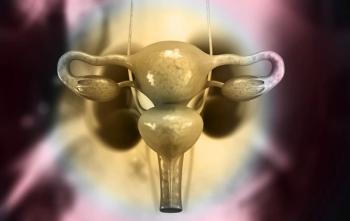
Oncology NEWS International
- Oncology NEWS International Vol 9 No 7
- Volume 9
- Issue 7
Paclitaxel/Cisplatin Cost-Effective for Ovarian Cancer
ASCO-Although paclitaxel (Tax-ol) plus cisplatin (Platinol) as initial therapy for ovarian cancer cost a good deal more than cyclophosphamide plus cisplatin, it is cost-effective by the usually accepted guidelines, said Hugh Walker, PhD, a health economist at the National Cancer Institute of Canada’s Clinical Trials Unit, Kingston, Ontario.
ASCOAlthough paclitaxel (Tax-ol) plus cisplatin (Platinol) as initial therapy for ovarian cancer cost a good deal more than cyclophosphamide plus cisplatin, it is cost-effective by the usually accepted guidelines, said Hugh Walker, PhD, a health economist at the National Cancer Institute of Canadas Clinical Trials Unit, Kingston, Ontario.
Dr. Walker presented the results of the cost study at the 36th annual meeting of the American Society of Clinical Oncology (ASCO) in New Orleans.
The study was designed to follow up a previous Intergroup study showing that paclitaxel/cisplatin resulted in significantly better progression-free and overall survival than cyclophosphamide/cisplatin.
The cost study looked at 149 patients with advanced epithelial ovarian cancer for whom detailed economic data were available. All patients received cisplatin at 75 mg/m². Patients in the study arm also got paclitaxel at 175 to 200 mg/m², while control subjects received cyclophosphamide at 750 mg/m². The cycle was repeated every 3 weeks for as many as nine cycles.
Among these patients, progression-free survival was 17 months in the study arm and 10.1 months in the control arm. Median overall survival was, respectively, 36.8 months and 25.6 months.
The economic question is, at what cost were those gains in survival achieved? Dr. Walker asked.
Total Costs Compared
Total costs (including drugs, treatment of complications, and clinic visits) from time of randomization until time of death or last follow-up averaged US $30,774 for the study-arm patients, but only US $18,515 for control patients. This difference was due primarily to the cost of paclitaxel, which averaged nearly US $9,000 per patient.
The researchers next computed the incremental cost per additional life-year gained, that is, how much extra it cost to keep a patient alive for an additional year using paclitaxel/cisplatin. They found that each additional year of progression-free survival obtained with paclitaxel cost US $21,321. Each additional year of overall survival with paclitaxel cost US $13,135.
In a commentary after Dr. Walkers talk, Robert Young, MD, president, Fox Chase Cancer Center, said that this figure is well under the $50,000 per year of life gained generally used as a rule of thumb when deciding whether a treatment is cost-effective.
The cost of Taxol/cisplatinum therapy per year of life saved compares very favorably with common screening and therapeutic modalities well established in modern medicine, Dr. Young said. He pointed out that Pap smear screening, for example, costs $500,000 per year of life saved.
If Less Expensive?
Dr. Walker also calculated the cost per year of life gained if paclitaxel were half as expensive and if hospitalization were half as expensive. Both would result in an even greater cost-effectiveness, although cutting the price of paclitaxel would have the greater effect.
In comparison to cyclophosphamide and cisplatin, paclitaxel at 175 mg/m² over 3 hours plus cisplatin is a cost-effective treatment for the initial management of advanced epithelial ovarian cancer at $13,135 per additional life-year of overall survival, Dr. Walker concluded.
Articles in this issue
over 25 years ago
Couric Urges Doctors to Talk to Patients About Colon Cancerover 25 years ago
Automated Imaging Notification System Close to Fail-Safeover 25 years ago
Higher Dairy Consumption Linked to Prostate Cancer Riskover 25 years ago
First-Year Funding of Early Detection Research Network Completeover 25 years ago
Gritty Antitobacco Ads and More From Legacy Foundationover 25 years ago
Tositumomab Effective for Low-Grade Follicular Lymphomaover 25 years ago
New Awards Spotlight Courage of Cancer Survivorsover 25 years ago
Hospital Volume Shown to Predict Breast Cancer Outcomeover 25 years ago
New Drug Information Websiteover 25 years ago
NCCN Presents Updated Colorectal Cancer GuidelinesNewsletter
Stay up to date on recent advances in the multidisciplinary approach to cancer.





